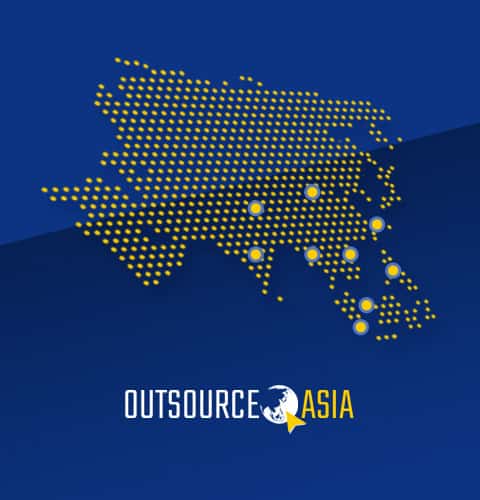
The Outsourcing Process: From Idea to Implementation
You should think about outsourcing like you would any other business investment. You wouldn’t put the time and money of your team into a business without a clear plan for how to do it and best practices in place. It needs a close examination and knowledge of how your business works. When choosing an outsourcing plan, you need to know exactly how outsourcing will help your business and where you will get the best return on your investment. Figure out the outsourcing process here.
Here are 7 steps that will help you and your business make a good, all-around plan for outsourcing.
1. Find out if you can outsource your business.
Before you contact a third-party outsourcing provider or tell your staff about changes, you need to make sure that your company has the right processes and best practices in place to support an outsourced model.
When you think about how your business works, you should ask yourself these questions:
- Does your company use tools and services that are in the cloud?
- Are your business processes well-documented so that it’s easy to train new employees?
- Can people who work from home or in a different country, like the Philippines, access your CRM and any other software that’s needed?
- Are the methods and protocols you use to protect data safe?
If you said “no” to any of the questions above, your company may need to spend more to get ready to outsource.
Answering “yes” to all these questions means that outsourcing might be the right choice for you. It’s now time to start talking to a company about outsourcing services.
Once you’ve decided to bring an overseas team into your business, you should let your current team know about it and deal with any resistance right away.
You could also wait to make a choice and then surprise your team when you start making changes to help your new offshore team member get started. If you do this, you could lose their trust, which would make outsourcing fail in the end. It works best to involve your team from the start, tell them about your ideas and goals, and ask them to think about how an outside team could help them with their daily tasks and job.
2. Figure out what jobs you want to send overseas.
Before you decide to outsource some business jobs or processes, you should look at all of them and decide which ones will give you the best return on your investment.
You can divide this step into two parts:
- The review of tasks
Do a review of all your business tasks and methods to start. It might be easier for smaller businesses to do this. For bigger projects, you might want to break up the tasks in a role or department that aren’t meeting business goals or aren’t doing their job well.
You should gather current job or position descriptions and start separating the more important tasks that involve strategy and building relationships from the less important tasks that are more routine, rule-based, and administrative.
Then, you might want to keep track of how long it takes employees to do business tasks by having them fill out a staff activity log. You should let your workers know that this is important for them to understand how much time each task takes during their workday, not micromanaging. In the long run, this step will help them focus on what they were hired to do instead of things that are more like entering data, which can be demotivating for some.
As soon as you’re done with this task review, you’ll know exactly which tasks are taking too much time from each employee and be ready to move on to the next steps in creating a business plan for an outsourcing project.
- Tasks that are best outsourced
Now it’s up to your company to look over this list of jobs and decide which ones can be outsourced. It’s not as easy as reviewing the jobs and calling someone else to do each one. This process might even help you find other inefficient parts of your business, like the way you set up your reporting structures or how you assign tasks, and so on.
Starting to rank each job against each other in terms of “frequency and complexity” will help you figure out which ones would be better off being outsourced.
To add difficulty, think about this:
- In comparison to other jobs in the department or business, how hard is this one?
- What kind of technical know-how do I need to finish this?
- How unique is this job to the company, and would it be hard to teach someone else how to do it?
- How often does this job get done compared to other tasks in the company or department?
- Is it worth adding a full-time job for this one task, or could it be combined with other tasks to make a role?
Once you’ve figured out how often and how hard each job is, you’ll have a good idea of which ones to include in your outsourcing schedule.
You shouldn’t hire outside help if you don’t know what they will do for you. This review of the job should have given you a good idea of what to look for in a candidate you hire to do the work for you.
3. Look for the right company to outsource to.
You’ve thought about how to use outsourcing. You’ve made your business “outsource ready” and made a list of jobs that can be done by someone else. This means you’re now ready to talk to an outsourcing partner.
It is very important to find the right outsourcing company with the right plan for your business and the way you do things at work. People who aren’t familiar with the Business Processing Outsourcing (BPO) field might not know what to expect from service providers or if what they’re selling is a good deal. They might also not know if they’re putting their business at unnecessary risk.
Start by going through this checklist to make sure you pick the right service for your business.
Job duties
- What tools do you use to make sure that your employees are always online and working?
- Do you work all the time?
- What do you do to keep an eye on my hired staff?
- Vacations and time off
- What hours do your employees work on holidays, and how do you handle the extra costs that come with them?
Peace of mind
- Could you describe your normal security policies and the systems you use to keep data, privacy, and security safe?
- How can you make sure that employees can’t use cloud-based apps and systems when they’re not at work?
Staffing and human resources
- How do you rate the work of your staff?
- How can you ensure employee satisfaction?
- What kind of standard reports on productivity do you offer?
- How does your hiring process make sure you get the best person for the job?
- What are the standards for tests that job candidates must take during the hiring process?
Billing and management
- How do you handle changes in currency? Will my bill go up and down every month
- Is there an Account Manager in my country?
Before you go to a sales meeting with an outsourcing provider, make sure you have these questions ready. That way, you’ll quickly find the right company for your business.
4. Take care of your tech.
Thanks to today’s technology, outsourcing is a very useful business option. It’s very cheap and simple to set up and use the technology. If you want to join, all you need is a computer, headset, webcam, and a web conferencing tool.
After that, you need to put your business processes and files in the cloud. This will help your onshore and offshore teams talk to each other more easily and make sure your offshore workers can get everything they need.
5. Make a plan for training
A common worry among companies that want to hire someone for the first time is “how long will it take to train them?” If the people you hire from outside your company are properly trained, it shouldn’t take longer than if you taught someone in-house.
You should be very clear on what your training goals are and how you plan to reach them. Your remote team member will need to be taught how your business works, and to do that, you are responsible.
Your company needs to spend time and energy teaching your outsourced team on all your systems and processes so they can do their jobs. Your outsourced team might not meet your needs without this expense.
Our experience has shown that the best way to ensure a job goes well is to hire an outsourced employee full-time and have them work for your business all the time.
You will need to give your outsourcing company a detailed description of the type of person you want and the jobs you want them to do if you decide this is the best model for you.
A Job Description (JD) and a Key Results Area (KRA) paper are the best way to do this. Simply put, the JD tells the potential employee what skills you’re looking for and what jobs you want them to do. The KRA document tells them how well you want them to do those jobs.
6. Take care of your remote staff.
Set it and forget it doesn’t work for managing anyone, let alone a team that works from abroad. You should have a practical management system in your business that you always use to oversee your contracted staff.
Having the help of your offshore management team on an operating level is possible if you hire the right outsourcing company.
The following can be part of this:
- Setting up and supporting IT
- Setting KPIs and managing results
- Make sure employees are working hard by keeping an eye on their work habits.
- Activities that get employees involved
- proactive advice and best practices for improving success as a whole
- taking care of law and compliance issues that are unique to the Philippines
- Ongoing help with hiring, HR, payroll, buildings management, and IT. Help with settling in for expats.
- Because they handle operations on the ground, you can focus on your work and business processes while still having as much control over quality and productivity as you need.
- Use online communication tools and work-in-progress (WIP) papers to keep track of your time spent offshore.
7. Grow the team you hire outside
It won’t take long for you to get used to how outsourcing works once you’ve hired your first outsourced team member. You’ll also start to see for yourself how the right outsourcing can really help your business.
As soon as you get it right the first time, you’ll start to see other ways that outsourcing could help your business improve processes, the customer experience, and eventually, business growth.
For businesses seeking reliable outsourcing partners, Outsource Asia provides a platform to connect with trusted service providers. Visit their website at www.outsourceasia.org to explore outsourcing opportunities tailored to your requirements. Make informed decisions, harness the benefits of Offshore Outsourcing, and propel your business to new heights.

